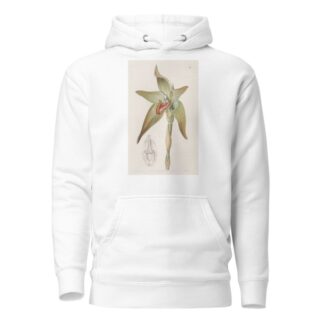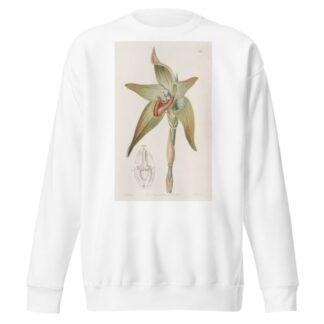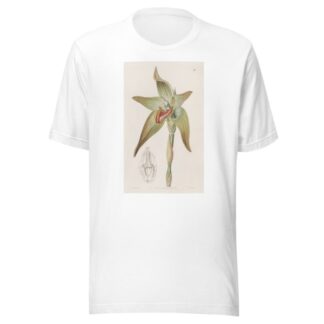Description
Large-flowered Lycaste by Sydenham Edwards printed on a T-Shirt
About the T-Shirt
Regular fit
Standard length, the fabric easily gives into movement
Casual wear
A classic, everyday option loved by our customers
Side-seamed
Constructed by sewing two parts together, creating a fitted look
The Unisex Staple T-Shirt feels soft and light with just the right amount of stretch. It’s comfortable and flattering for all. We can’t compliment this shirt enough–it’s one of our crowd favorites, and it’s sure to be your next favorite too!
- Solid colors are 100% Airlume combed and ring-spun cotton
- Ash color is 99% combed and ring-spun cotton, 1% polyester
- Heather colors are 52% combed and ring-spun cotton, 48% polyester
- Athletic and Black Heather are 90% combed and ring-spun cotton, 10% polyester
- Heather Prism colors are 99% combed and ring-spun cotton, 1% polyester
- Fabric weight: 4.2 oz./yd.² (142 g/m²)
- Pre-shrunk fabric
- 30 singles
- Side-seamed construction
- Tear-away label
- Shoulder-to-shoulder taping
- Blank product sourced from Nicaragua, Mexico, Honduras, or the US
Sydenham Edwards (1768-1819)
Sydenham Teast Edwards was a natural history illustrator. He illustrated plants, birds and importantly published an illustrated book on the breeds of dogs in Britain, Cynographia Britannica.
Edwards was born in 1768 in Usk, Monmouthshire, the son of Lloyd Pittell Edwards, a schoolmaster and organist; and his wife, Mary Reese, who had been married on 26 September 1765, at Llantilio Crossenny Church, and where Sydenham was christened in 1768. Mary Reese was a sister of the Rev. William Reece, the curate of Llantilio Crossenny who had married Ann Mackafee. Their son, Richard Reece was an eminent physician and wrote a number of works on medicine. Young Edwards had a precocious talent for draughtsmanship and when only 11 years old had copied plates from Flora Londinensis for his own enjoyment. A certain Mr. Denman visited Abergavenny in 1779 and saw some of Edwards’ work. Denman, being a friend of William Curtis, the publisher of botanical works, and founder of the Curtis’s Botanical Magazine, spoke to Curtis about the boy. Curtis proceeded to have Edwards trained in both botany and botanical illustration.
Edwards produced plates at a prodigious rate: between 1787 and 1815 he produced over 1,700 watercolours for the Botanical Magazine alone. He illustrated Cynographia Britannica (1800) (an encyclopaedic compendium of dog breeds in Britain), New Botanic Garden (1805-7), New Flora Britannica (1812), and The Botanical Register (1815-19). Edwards established the latter under his own editorship in 1815 after a disagreement with John Sims, who succeeded Curtis as editor. He also provided drawings for encyclopedias such as Pantologia and Rees’s Cyclopædia. He completed a number of parrot illustrations between 1810 and 1812 which were acquired by Edward Smith-Stanley, 13th Earl of Derby. Edwards was elected a Fellow of the Linnean Society in 1804.
Edwards’ work inspired the decoration of ceramics made by a number of major potters of the time, such as Spode.
He was buried at Chelsea Old Church (All Saints), London.






Reviews
There are no reviews yet.